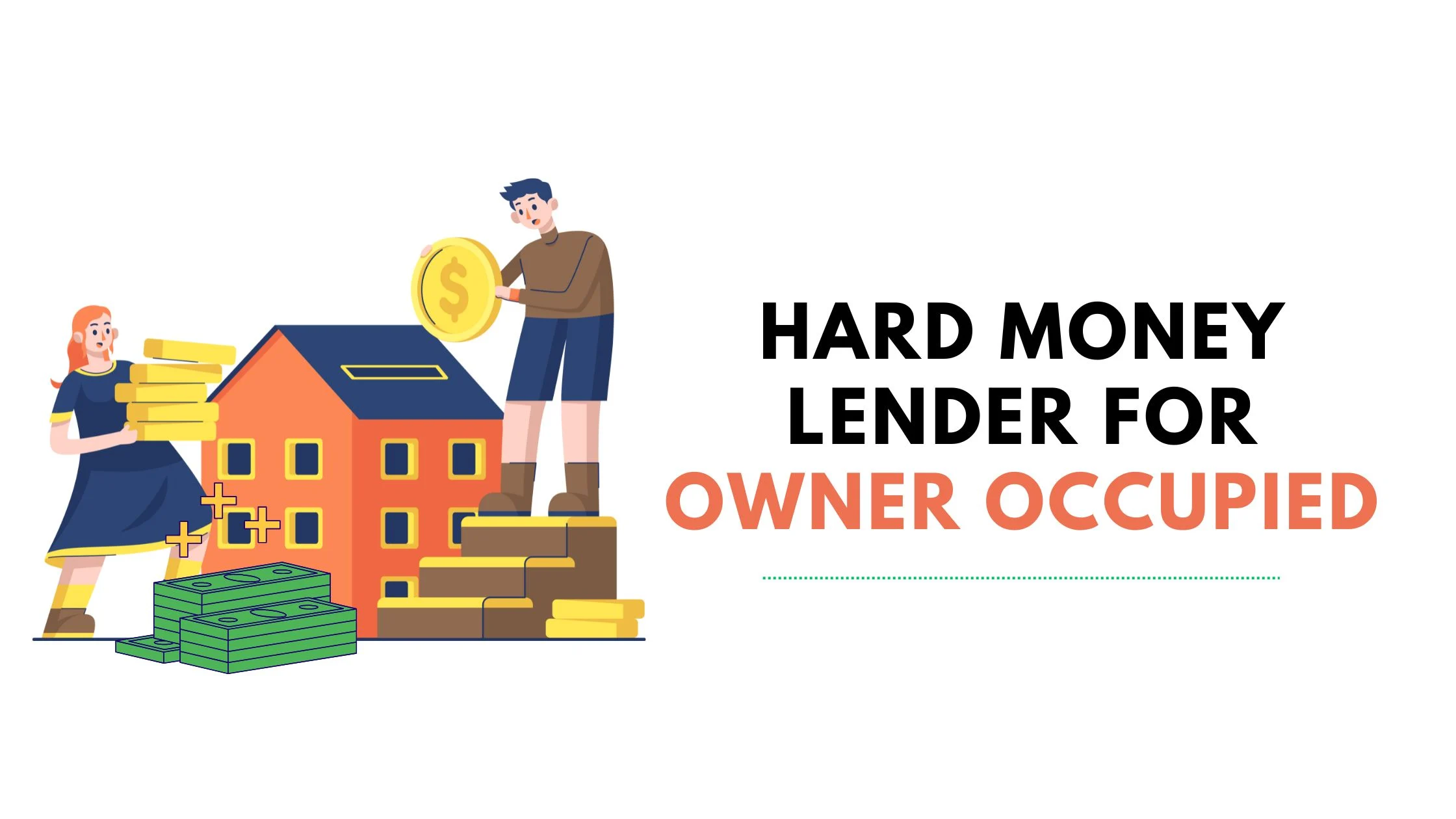A hard money lender for owner-occupied properties provides short-term loans backed primarily by your home’s value, not your credit history. These loans usually cover 60–75% of your home’s worth, feature 10–18% interest rates, and close in days—perfect when you need cash fast for repairs or refinance.
1. What Are Owner-Occupied Hard Money Loans?
Imagine you own a house and need cash ASAP—maybe for a big roof fix or to bridge before your big bank mortgage closes. Hard money lenders step in, saying:
- “We don’t care much about your credit score.”
- “Show us your home’s value.”
- “We’ll fund 60–75% of that value in days.”
But beware these loans pack 10–18% interest and short payback periods (6–36 months)
2. How Do Lenders Set Their Rates?
- LTV (Loan-to-Value): More equity = better rate. Most lenders cap at 60–75% LTV
- Property Value: They focus on your home’s worth, not FICO.
- Term Length: Shorter terms (6–12 months) often mean slightly lower rates.
- Loan Purpose: Rehab vs. refinance vs. bridge each has its own cost.
3. Key Requirements & Rates
| Requirement | Typical Range |
|---|---|
| LTV | 60–75% of home’s value |
| Interest Rate | 10–18% annually |
| Term | 6–36 months |
| Equity Needed | At least 25–40% equity |
| Proof of Income | Pay stubs, tax returns, bank statements |
4. Quick Comparison
| 🏦 Lender Type | 💵 Max LTV | 📈 Rate Range | ⏱️ Funding Speed |
|---|---|---|---|
| Private Hard Money | 60–75% | 10–18% | 1–7 days |
| AMI Lenders (TX) | Up to 80% | 12–16% | 3–5 days |
| OfferMarket Specialists | 60–70% | 11–15% | 5–10 days |
5. Pros & Cons
| ✅ Pros | ❌ Cons |
|---|---|
| Super fast approval & funding | High interest eats into profits/savings |
| Less focus on credit score | Short terms mean bigger monthly payments |
| Great for quick rehab or bridge financing | Must have substantial equity (25–40%) |
| Simple docs: proof of value & income | Prepayment penalties sometimes apply |
6. Tips to Nail a Great Deal
- Show Strong Equity: Aim for 30–40% equity to hit the lowest rates.
- Prepare Docs: Have tax returns, pay stubs, and a home-value report ready.
- Compare Lenders: Don’t pick the first one—shop 2–3 to find the best rate.
- Negotiate Points: Offer a point (1% of loan) upfront to drop your rate ~0.25%.
- Have an Exit Plan: Plan how you’ll refinance or pay off in 6–12 months.
7. Simple Terms You Should Know
- LTV: Loan amount ÷ home value (e.g., $150K loan on a $200K home = 75% LTV).
- Points: Upfront fees (1 point = 1% of loan) to buy down your rate.
- Rehab Budget: If funding repairs, present a clear cost plan.
- Exit Strategy: Your plan to repay—sell, refinance, or cash flow.
9. Final Thoughts
Owner-occupied hard money loans can be a lifesaver when you need cash yesterday—just for a quick fix or bridge until your bank loan arrives. They move lightning-fast, lean on your home’s equity, and dodge long bank waits. But remember: those 10–18% rates and short terms can sting if you’re not ready.
Key Takeaway: If you’ve got ample equity, clear docs, and a rock-solid exit plan, hard money can unlock fast funds. Otherwise, weigh other options like home-equity lines or traditional refinancing first.
Stay savvy, shop around, and borrow responsibly! 🔑👍
Disclaimer
This article is for informational purposes only and doesn’t substitute professional financial advice. Hard money loan terms vary by lender and location. Always read loan agreements and consult a qualified mortgage specialist before borrowing.
Top 5 FAQs
Can I use this loan on my primary home?
Yes, “owner-occupied” means your main residence, not a rental
What’s the fastest funding time?
Some lenders close in just 24–48 hours if docs are ready.
Are there prepayment penalties?
Depends on the lender ask up front. Many charge 1–2% if you pay early.
Do I need to live in the house full-time?
Generally yes they’ll verify occupancy with IDs and utility bills.
How do I refinance afterward?
Plan to refinance into a conventional or FHA loan within 6–12 months to avoid high costs.
